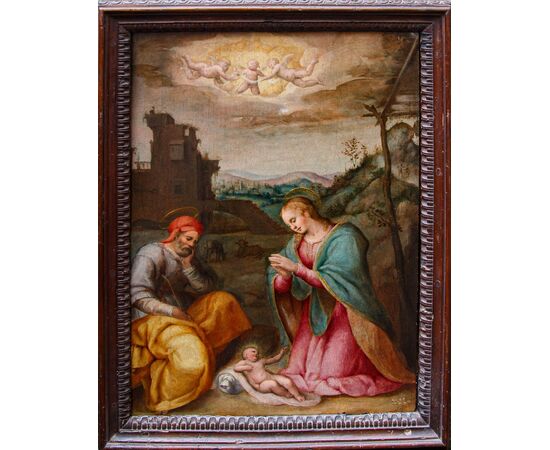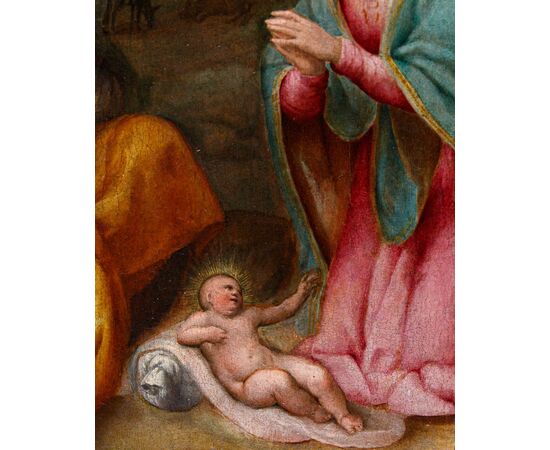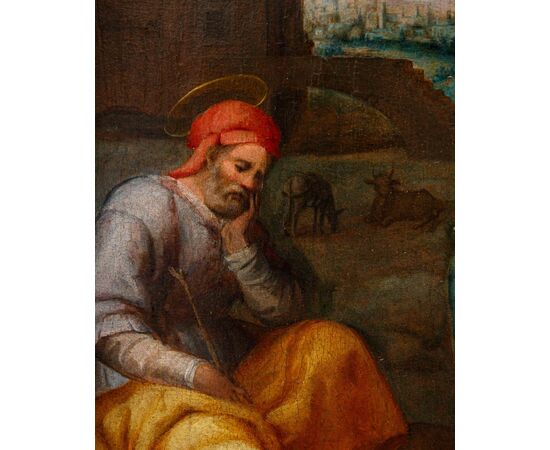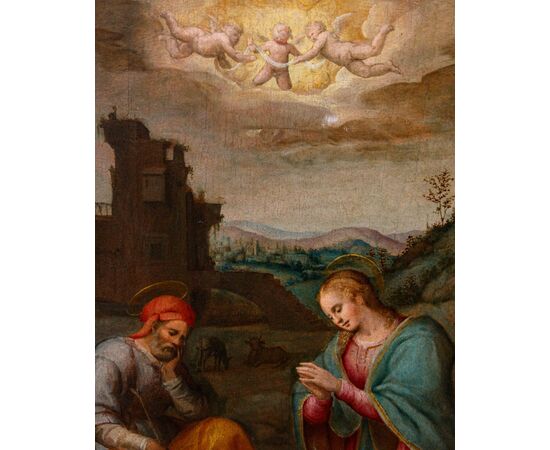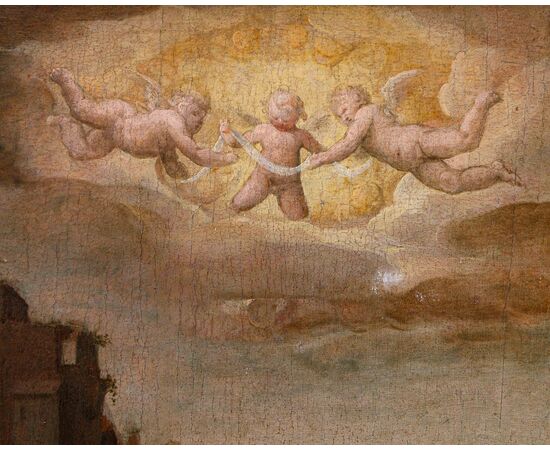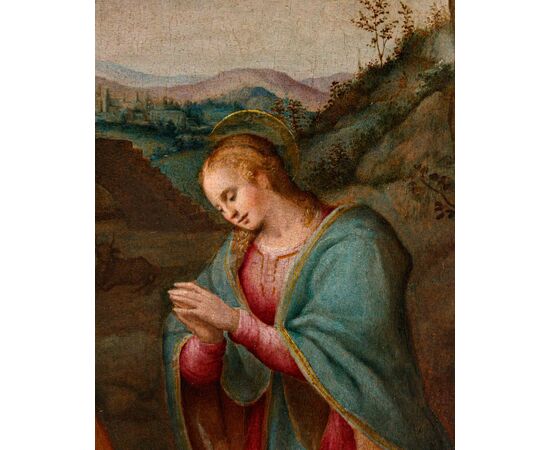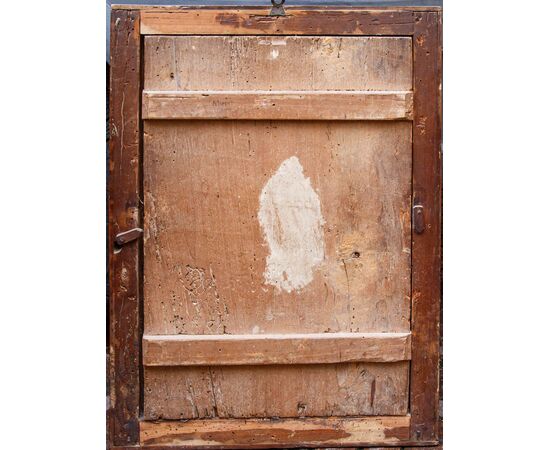Francesco Del Brina (Florence, 1529 – 1586), Nativity
Francesco Del Brina (Florence, 1529 – 1586) Nativity Oil on panel, 70 x 47.5 cm With frame, 80 x 58 cm Critical note by Prof. Alessandro Delpriori Born into a family of artists – his brother Giovanni, with whom he often worked jointly, was an equally prominent figure in the Florentine painting scene of the second half of the sixteenth century – Francesco Del Brina (alternatively known as Brina or Brini) trained in the busy workshop of Ridolfo del Ghirlandaio, one of the most vibrant cultural environments in 16th-century Tuscany. According to American scholar Freedberg, one of Ghirlandaio's closest associates, Michele Tosini, also known as Michele di Ridolfo (Florence, 1503 –1577), directly oversaw the Florentine painter's training, teaching him the pictorial dictates of Vasari's doctrine, to which he adhered closely throughout his entire production. Vasari himself, to whom Brina deliberately looked for inspiration, makes a quick reference, unchanged between the Torrentiniana and Giuntina editions of the Lives, to the artist's activity, who is presented, in the appendix to the life of Grardo miniaturist, as a "young Florentine painter" collaborating with Gherardo del Fora in the realization of the fresco on the external facade of the church of Sant’Egidio in Florence. Among the most important projects regarding the first phase of Francesco's career is certainly the design of the installations for the triumphal entry into the city of Francesco de' Medici following his wedding to Joanna of Austria: there are numerous preparatory sketches for these ephemeral architectures – many of which were exhibited at the acclaimed Exhibition of Vasari Drawings at Palazzo Pitti in 1966 – that show Brina's great technical skill not only as a painter but also as a draftsman. The painter was active, between the fifties and sixties, at the Duomo of San Gimignano, where he created the lost fresco of the Multiplication of the Loaves and Fishes, and at Palazzo Vecchio, alongside the numerous students of Vasari: in this phase, his hand is indistinguishable. To define Brina's mature style, a signed and dated painting from 1570, the Conception for S. Michele in Visdomini (Paatz, IV, p. 208 n. 42), is of particular importance. Although the works attributed to him are not very numerous, those certainly ascribed to him show the artist's ability to intelligently converge the suggestions drawn from Vasari's production and the activity of Ridolfo del Ghirlandaio: this is the case of the Holy Family of the Bandini Museum in Fiesole, the Holy Family in the Palatine Gallery, and the Madonna and Saints from the church of SS. Iacopo and Lorenzo and now in the deposits of the Florentine Galleries. The altarpiece from 1570 for S. Michele in Visdomini serves as a fixed point to identify Francesco's style, although the painting is now very obscured and deteriorated: it reveals a rather archaic culture, with frequent references to Andrea del Sarto – the Virgin retraces the gesture of Andrea's Madonna in the altarpiece for the Vallombrosan monks, now in Palazzo Pitti –, while the dense composition follows the lines of the intricate altarpieces of Florentine painting of the time dominated by Vasari, although it rejects the most exasperated mannerist distortions. A combination of these experiences can be perceived even in our panel, in which the models from Andrea del Sarto's archaizing impulse and the pastel colors in use since the first half of the sixteenth century are combined with the contemporary innovations developed in the workshops of Ghirlandaio and Vasari.

